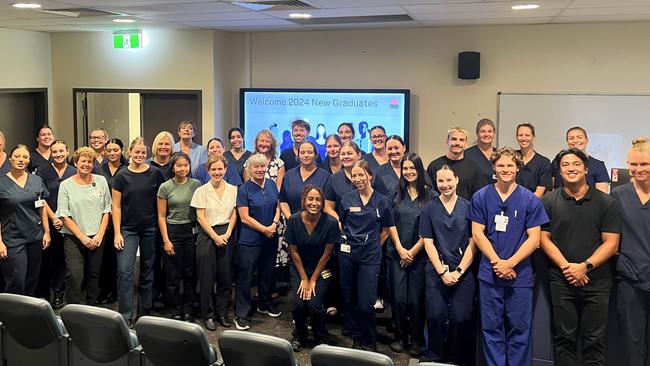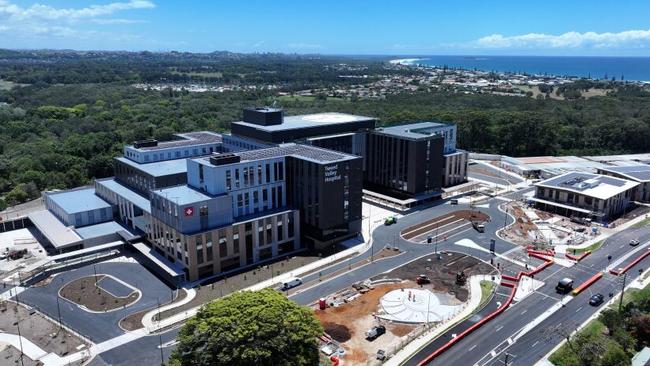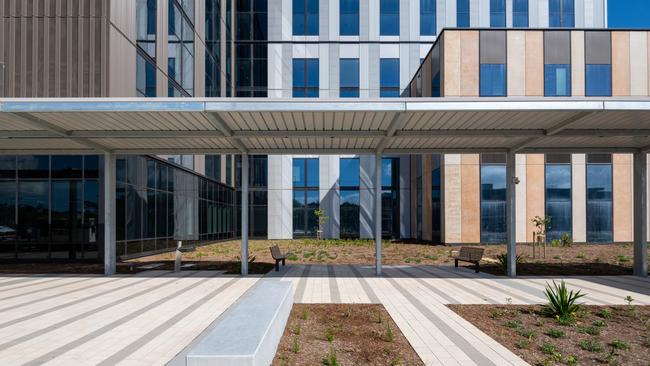Staffing concerns across northern NSW hospitals before opening of $723m Tweed Valley Hospital
The new $723m hospital in the Tweed will swing open its doors in weeks – but will there be enough staff to run it? Here’s why the NSW health sector is losing staff to Qld.
Regional News
Don't miss out on the headlines from Regional News. Followed categories will be added to My News.
Close to 200 graduate nurses and midwives are ready to scrub into Northern Rivers hospitals, including the new Tweed Hospital – but it’s not putting a dent in a severe staffing shortage across the region.
Last week, Northern NSW Local Health District (NNSWLHD) announced more than 190 new graduates would be deployed through the region, with 80 signed up for employment at the new $723.3 million Tweed Valley Hospital at Cudgen, near Kingscliff CBD.
However, more than 80 job vacancies – including nurses, pharmacists, security, managers, technicians, and support roles – still go unfilled at the new hospital just 11 weeks before the doors swing open on May 14.

NSW Nurses and Midwives’ Association general secretary Shaye Candish said the new intake was welcomed – but “we need to ensure these graduates receive the right support and training in their first year of practice … to properly address the issues of retention”.
“We know NSW is losing hardworking nurses and midwives across the border to Queensland, because their pay is higher,” she said.
“The state government must improve the pay and working conditions of our nurses and midwives if it wants to retain the workforce.”
Ms Candish told NewsLocal by 2025, the nation was predicted to have an astonishing nursing shortfall of 85,000 staff.

She also said the Northern Rivers was not immune to midwife shortages.
“After years of excessive workloads and suppressed wages, we are now experiencing a critical shortage of midwives nationwide. This is resulting in more overtime being worked, unqualified staff being used, and deteriorating workloads, which leads to more midwives dropping their hours, or simply leaving the profession,” she said.
NNSWLHD chief executive Tracey Maisey said attracting and retaining long-term staff in the region was a “longstanding challenge”.
“We are committed to boost recruiting efforts by actively pursuing overseas recruitment opportunities to fill long-term vacant positions from Clarence to Tweed, supporting current staff and improving recruitment processes,” she said.
“We are also looking at increasing permanent contracts, supporting skills development and employing additional clinical nurse educators.”

“As part of the new Tweed Valley Hospital, a collaboration between four of Australia’s leading education institutions and NNSWLHD will help grow and train skilled healthcare workers to support improved health outcomes across Northern NSW.”
Ms Maisey said across the state, the government was increasing the rural health workforce incentive scheme package from $10,000 up to $20,000 for the hardest-to-fill roles.
NNSWLHD director of nursing and midwifery Katharine Duffy welcomed the new graduates, saying they would “play a vital role in the region’s busy health services”.
“We’re pleased to be welcoming a record number of new graduate nurses and midwives across the district this year, and to also offer these staff permanent roles which support our efforts to grow and train a sustainable local health workforce,” she said.
“Our nursing and midwifery service has some incredible mentors and teachers who will nurture these new graduates to develop in their chosen specialties.”
All vacancies across the NNSWLHD can be found on the NSW Health jobs website, with specific Tweed Valley Hospital roles available at Tweed Valley Hospital Recruitment.
Community members are invited to take a behind the scenes look at the new $723.3 million Tweed Valley Hospital at its Community Open Day on Saturday 16 March 2024.
Got a story tip? Email sam.stolz@news.com.au





